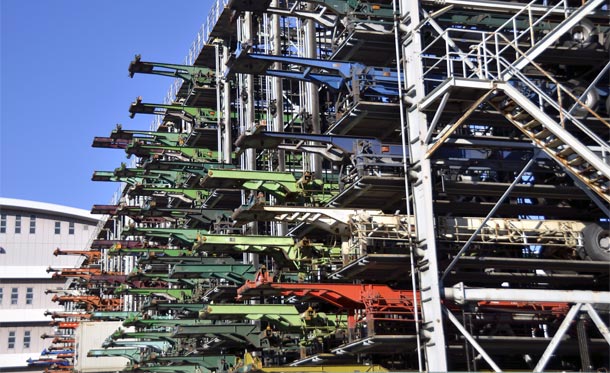When Will the Container Chassis Shortages End in Ocean Shipping?

In light of pandemic-related port congestion globally—especially between Asia, Australia and the Americas—container chassis shortages are creating new challenges across the global supply chain:
- Unnecessary delays to ocean shipments
- Additional strain for shipments already facing persistent port and rail ramp congestion
- Lack of vessel space due to export delays
- Increased lead times for bookings
Now more than ever, choosing the right logistics partner is crucial to make sure your shipment is paired with the right equipment at the right time.
Background
Chassis for port drayage used to be owned by steamship lines and stored in the port. Changes in federal oversight regarding the roadworthiness of the equipment led most of the top carriers to exit the market, shifting ownership of chassis to third-party providers. As a result, many of the older units were gradually scrapped and not replaced, reducing the overall pool available at any one time. At the same time, increasingly larger ships began calling on ports, tying up thousands of chassis at a time. Third-party chassis pools are still searching for a model that gives them enough equipment to serve market peaks without excess equipment sitting idle during lulls.
Current Situation and Peak Season Forecast
This gradual increase in vessel TEU (twenty-foot equivalent unit) capacity, combined with a decline in the numbers of available chassis at all U.S. ports, has exacerbated pandemic-related labor shortages already in place. Due to pent-up consumer demand and the subsequent surge in container volumes hitting U.S. shores, chassis shortages are expected for most ports through peak season and the remainder of 2021.
How to Choose the Right Logistics Partner
When choosing a logistics provider for your shipment, be sure they understand the factors contributing to the recent chassis shortage and go over the latest conditions at any port under consideration BEFORE making your shipping arrangements. Once INCOTERMS are established, lining up drayage and chassis in the U.S. (which in the past was a reasonably easy afterthought) is now a critical, upfront element of the process.
A consultative forwarder should monitor daily conditions and analyze each shipment, considering alternatives such as air freight, LCL rather than FCL, backup port pairs when feasible, and inland trucking options. It’s helpful to maintain a creative and flexible stance to minimize costs and delays. Be certain your logistics provider has tried-and-true mitigation strategies.
In your search, consider DGX-Dependable Global Express with a long-standing track record in commercial international air, ocean and rail transportation. We have a clear understanding of the current situation. We believe in long-term relationships with a consultative and transparent approach to international shipping. Most importantly, we can guide you through each step of your next shipment, navigating current chassis-related issues, minimizing unnecessary delays, and avoiding unneeded headaches.
DGX assigns you a dedicated sales agent at the front end of your shipment planning as part of the personalized attention that we provide to every customer. For more information, call (888) 488-4888 Ext. 2011 or email us.